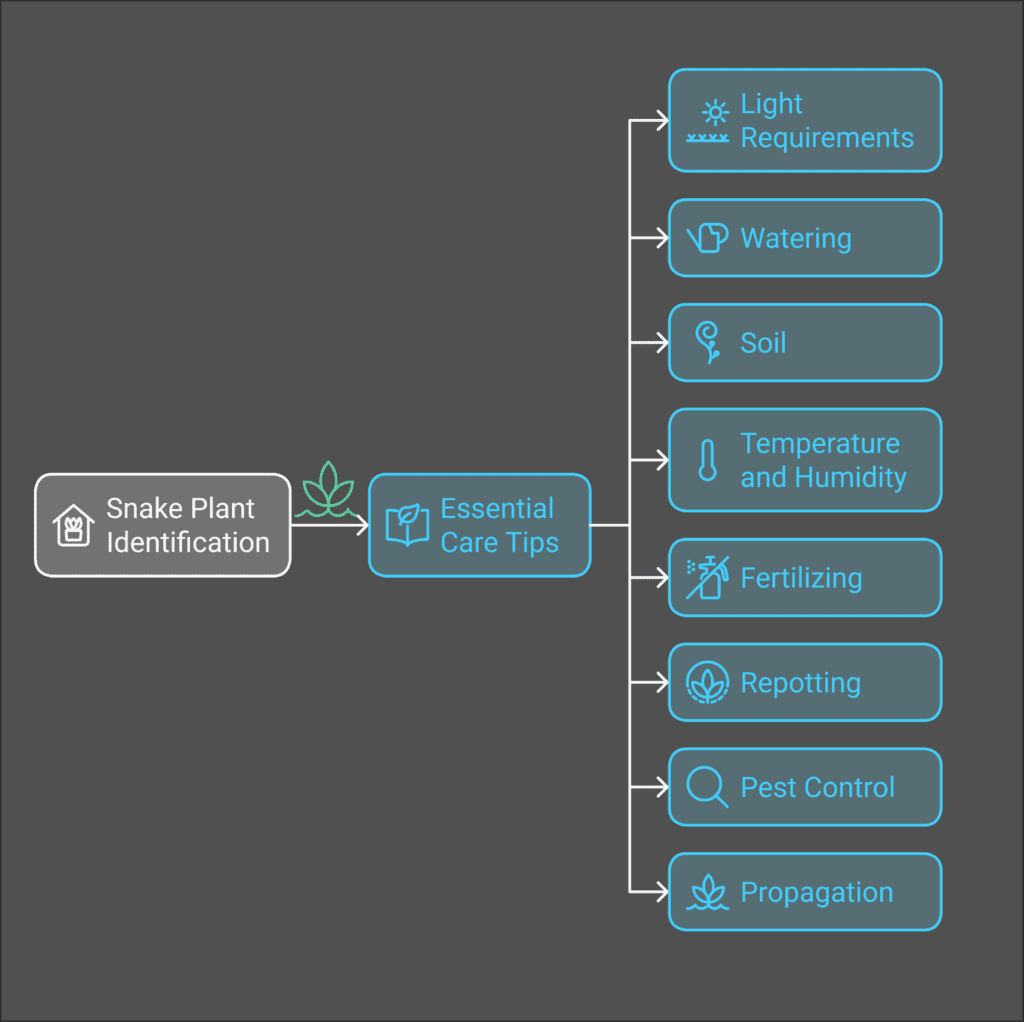Your cart is currently empty!

Snake plants, also known as Sansevieria or mother-in-law’s tongue, are popular houseplants known for their striking appearance and resilience. This document provides essential care tips to help you maintain a healthy and thriving snake plant, ensuring it remains a beautiful addition to your indoor space.

Light Requirements for Snake Plants
Snake plants are incredibly adaptable when it comes to light conditions. They can thrive in low light but prefer indirect sunlight. Avoid placing them in direct sunlight for extended periods, as this can scorch their leaves. A spot near a window with filtered light is ideal.
How to Water Your Snake Plant Properly
One of the most important aspects of snake plant care is proper watering. These plants are drought-tolerant and prefer to dry out completely between waterings. Water your snake plant every 2-6 weeks, depending on the humidity and temperature of your environment. Always check the soil moisture before watering; if the top inch of soil is dry, it’s time to water.
Best Soil for Snake Plants
Use a well-draining potting mix to prevent root rot. A cactus or succulent mix works well, or you can create your own by mixing regular potting soil with sand or perlite to enhance drainage.
Optimal Temperature and Humidity for Sansevieria
Snake plants thrive in a temperature range of 60°F to 80°F (15°C to 27°C). They can tolerate occasional temperature drops but should be protected from frost. As for humidity, snake plants are not picky and can adapt to various humidity levels, making them suitable for most indoor environments.
Fertilizing Tips for Snake Plants
Fertilize your snake plant during the growing season (spring and summer) with a balanced, diluted houseplant fertilizer every 4-6 weeks. Avoid fertilizing in the fall and winter when the plant is dormant.
When to Repot Your Snake Plant
Snake plants grow slowly and typically need repotting every 2-3 years. Choose a pot that is only slightly larger than the current one to prevent overwatering issues. Repotting is best done in the spring.
Pest Control and Maintenance for Snake Plants
While snake plants are generally pest-resistant, they can occasionally attract mealybugs or spider mites. If you notice any pests, treat them with insecticidal soap or neem oil. Regularly inspecting your plant can help catch infestations early.
How to Propagate Your Snake Plant
Snake plants can be easily propagated through leaf cuttings or division. For leaf cuttings, cut a healthy leaf into sections and allow them to callous over for a few days before placing them in soil. For division, carefully separate the plant at the roots and replant the sections in their own pots.
Conclusion: Ensuring Healthy and Vibrant Snake Plants
With their striking foliage and minimal care requirements, snake plants are an excellent choice for both novice and experienced plant enthusiasts. By following these care tips, you can ensure your snake plant remains healthy and vibrant, enhancing your indoor space for years to come.
For more information, you can check out our shop and visit our FAQ page.
Explore More Varieties of Succulents
If you’re interested in expanding your indoor garden, explore our wide selection of succulents and other houseplants to find the perfect addition to your home. Visit Frek Enterprises for more varieties!
Follow Us for More Inspiration:
For inquiries, feel free to contact us: 📞 7810952948
📧 [email protected]
Share


Leave a Reply